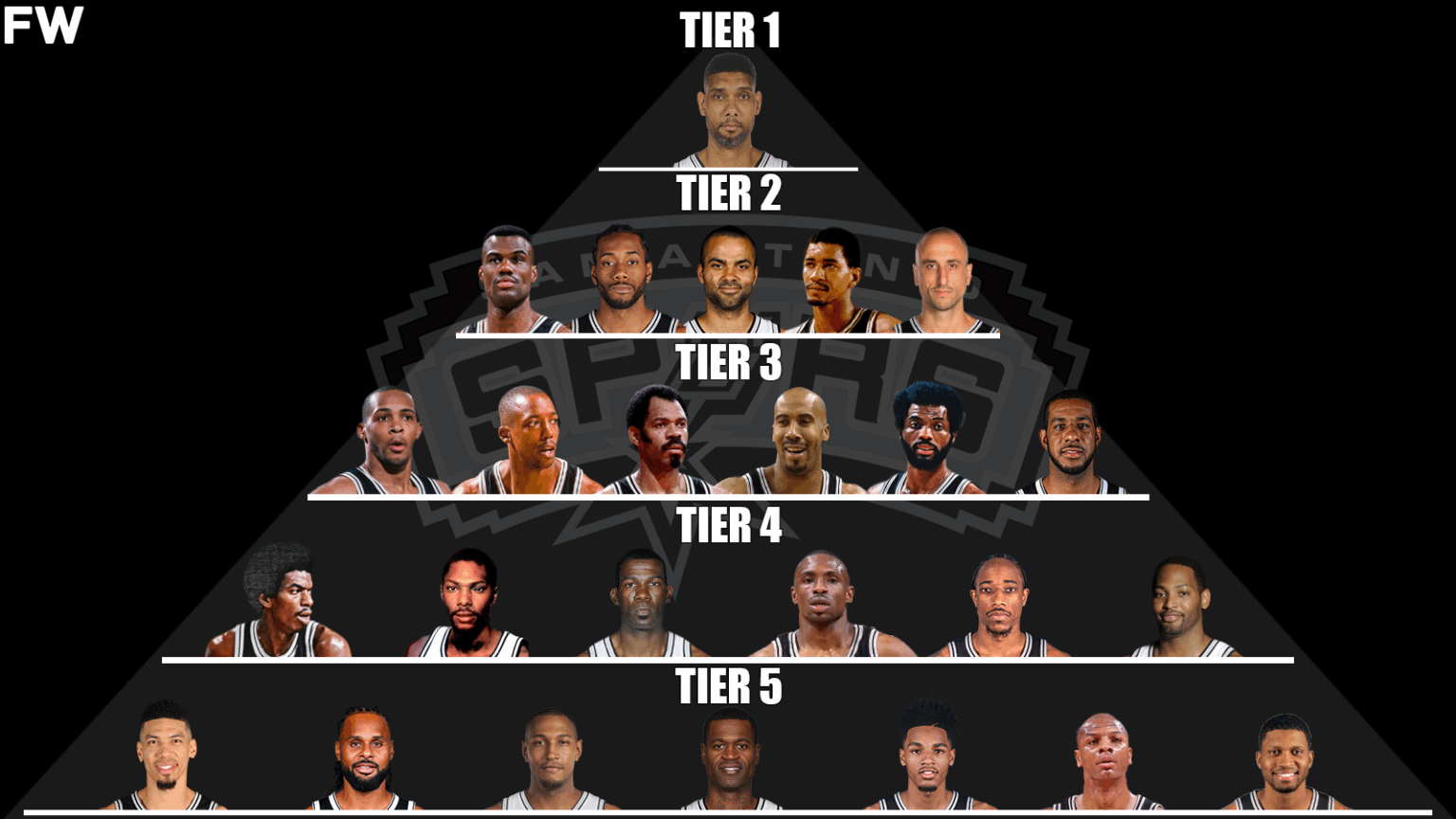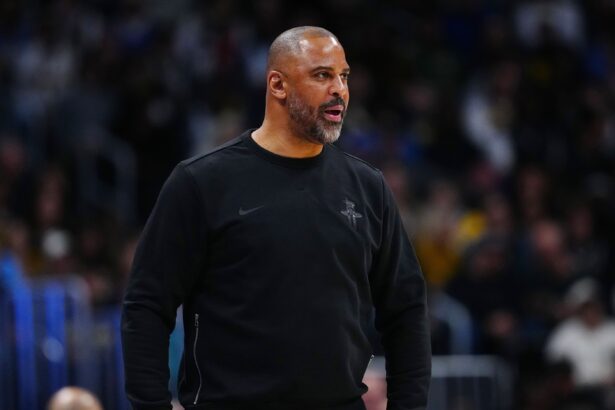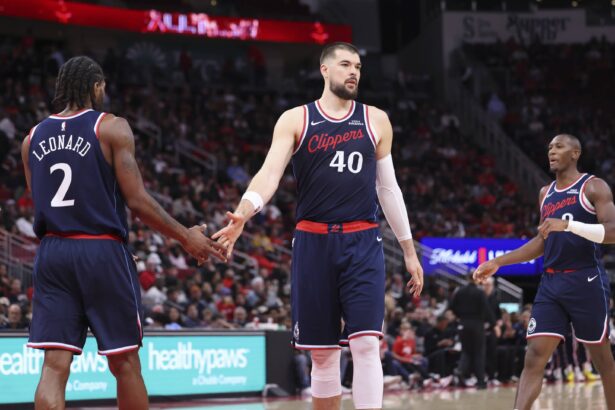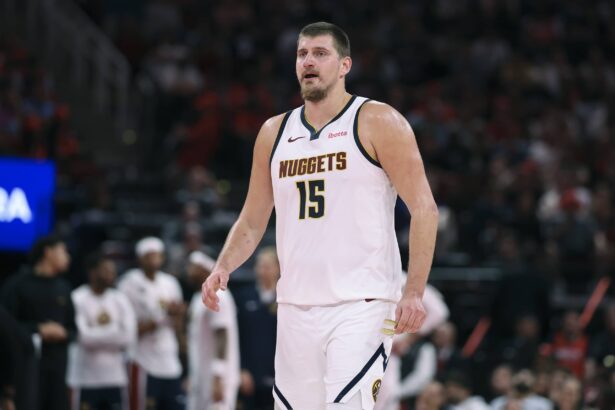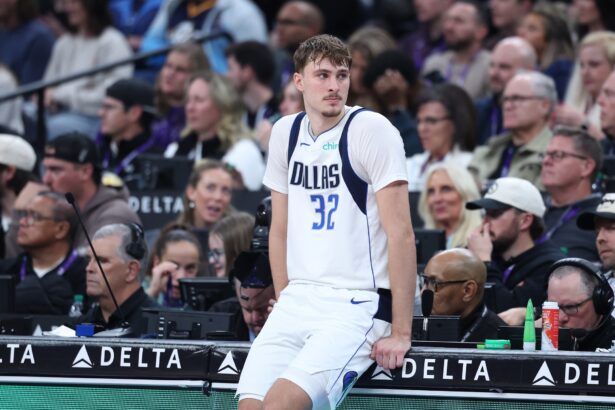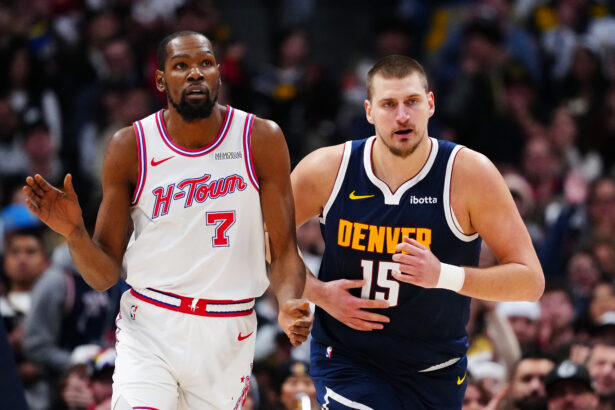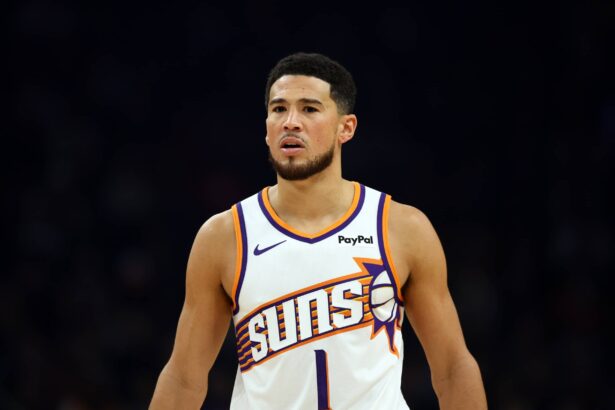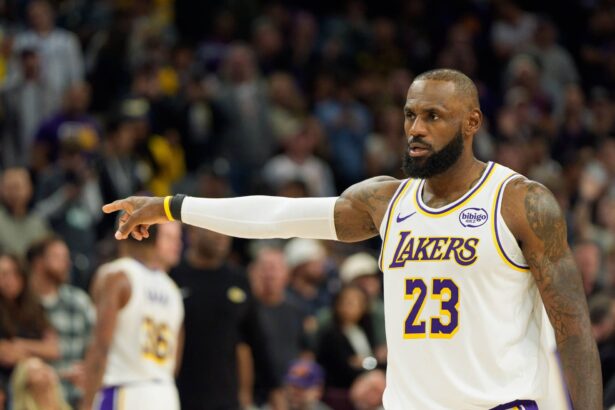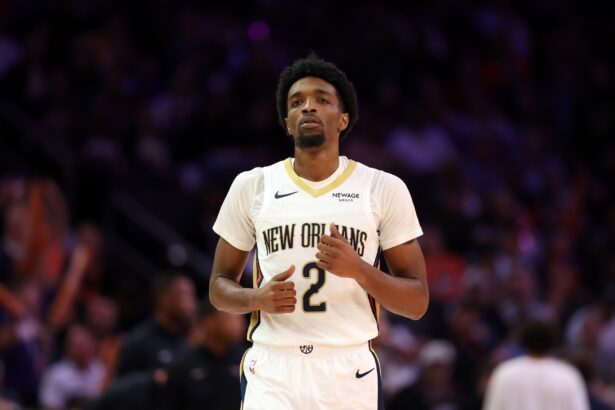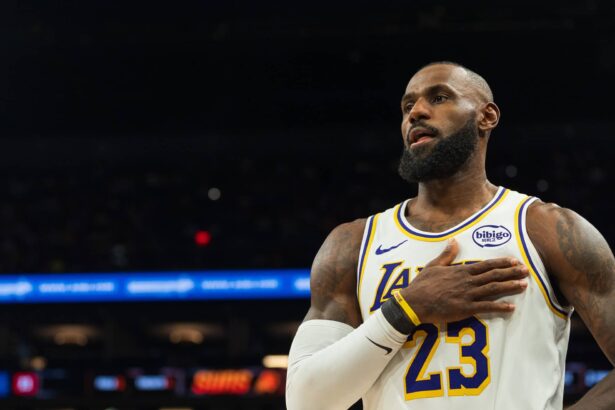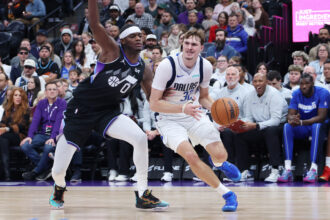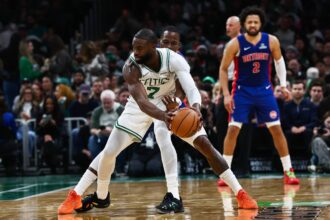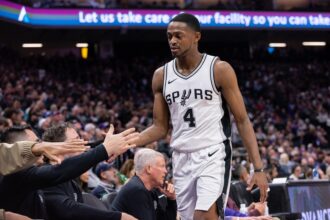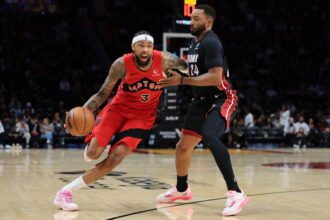- The San Antonio Spurs have won five NBA championships in their history
- Head Coach Gregg Popovich has the most career wins of any coach in history with 1,364
- There have been three different players to win Finals MVP awards with the Spurs and two who have won MVP
The San Antonio Spurs have one of the more complex histories as an NBA franchise. As one of the teams who came over in the 1976 NBA-ABA merger, the Spurs took years to gain relevancy as a legitimate championship contender. It would take over two decades to be more accurate. Despite their struggles early on as a franchise, they would eventually find their way and become five-time NBA champions with all of their championships coming between 1999 and 2014.
As we have done with so many NBA franchises before, today is the day we honor those who molded the Spurs into the powerhouse they are seen as in NBA history at this time. From ABA legends who carried their star power over to the NBA with the merger to the franchise players who helped them become one of the greatest dynasties in NBA history, these 25 players below are simply the elite of the elite in San Antonio Spurs history.
For anyone not familiar with our GOAT pyramid format, here are the franchises we have covered in the past. It is important to remember that these players are ranked and placed on these tiers based only on their time in a Spurs uniform and not any other stops in their careers.
– The Los Angeles Lakers All-Time GOAT Pyramid
– The Chicago Bulls All-Time GOAT Pyramid
– The Golden State Warriors All-Time GOAT Pyramid
– The Boston Celtics All-Time GOAT Pyramid
– The Detroit Pistons All-Time GOAT Pyramid
– The Miami Heat All-Time GOAT Pyramid
– The Houston Rockets All-Time GOAT Pyramid
– The Brooklyn Nets All-Time GOAT Pyramid
– The New York Knicks All-Time GOAT Pyramid
– The Milwaukee Bucks All-Time GOAT Pyramid
– The Denver Nuggets All-Time GOAT Pyramid
– The Philadelphia 76ers All-Time GOAT Pyramid
– The Dallas Mavericks All-Time GOAT Pyramid
Now that you have checked out a few of our examples, let’s dive into the San Antonio Spurs all-time GOAT pyramid.
Tier 5
Danny Green, Patty Mills, Boris Diaw, Stephen Jackson, Dejounte Murray, Terry Cummings, Rudy Gay
Tier 5 will be players who had a moderate to medium impact on the Spurs franchise as a whole. While Danny Green never reached All-Star levels in his NBA career, his precise three-point shooting would help lead to an NBA championship for the team in 2014. Green spent eight seasons with the Spurs from 2010 through 2017 averaging 9.1 points per game on 39.6% shooting from three. In the NBA playoffs, he would average 8.4 points per game on 41.5% shooting from three in eight appearances.
Patty Mills is another member of the Spurs’ 2014 championship team who was a productive member of the team off the bench. Mills spent 10 seasons with the Spurs where he averaged 9.4 points per game while shooting 43.0% overall and 38.9% from three. Mills was absolutely a fan-favorite of the team for that decade spent in San Antonio but remains on Tier 5 at this point.
Boris Diaw was a touch past his best days in the NBA when he joined the Spurs in the 2011-12 season via trade. Diaw would mostly come off the bench for the team over the next four and a half seasons and helped them capture an NBA championship in 2014. Diaw would average 9.2 points and 4.8 rebounds for the Spurs during that 2014 title run as well as 7.1 points and 4.1 rebounds in his five playoff appearances in five seasons.
Stephen Jackson had two separate stints with the Spurs in his career, both of which came with appearances in the NBA Finals. In 2003, Jackson helped the Spurs capture their second NBA championship averaging 12.8 points, 4.1 rebounds, and 1.4 steals per game on their playoff run. Jackson would return to the Spurs a decade later for the 2012 and 2013 seasons but was nearing the end of his career. In his second stint with the team, Jackson averaged just 7.9 points and 3.1 rebounds per game.
Dejounte Murray was the Spurs’ 29th overall pick in the 2016 NBA Draft. By year two, Murray had earned a spot as their starting point guard as a two-way player with a huge upside, making an All-Defensive Team in 2018 as well. After a torn ACL cost him his entire third season, Murray would go on to win a steals title in 2022 along with his first All-Star appearance averaging 21.1 points, 8.3 rebounds, 9.2 assists, and 2.0 steals per game. Despite his increasingly improved play, Murray was only able to reach the playoffs twice with San Antonio never reaching past the second round.
Terry Cummings is best known for his days with the Milwaukee Bucks and for being the only player to ever outscore Michael Jordan in a playoff series. After his days in Milwaukee were through, Cummings would spend six seasons in San Antonio where he averaged 14.4 points and 7.0 rebounds per game on 47.6% shooting. Though he was past his All-Star form, Cummings helped the team reach the playoffs all six seasons he was there from 1990 through 1995.
The final member of Tier 5 to wrap things up is Rudy Gay. Famously, Rude Gay has never won a single playoff series in his career which remained the case when he played with the Spurs from 2018 through 2021. Over his four seasons with the team, Gay averaged 11.9 points and 5.6 rebounds per game which perfectly places him toward the end of Tier 5. In each of his two playoff appearances with the team, Gay and Company failed to make it past the first round.
Tier 4
Larry Kenon, Mike Mitchell, Michael Finley, Avery Johnson, DeMar DeRozan, Robert Horry
Tier 4 is when we begin to break down more of the most important players in the history of the San Antonio Spurs. To start things off is ABA and NBA legend Larry Kenon. In 1976, Kenon would join the Spurs and continue to play with the team over the next four seasons when they merged with the NBA. In his five seasons with the team, Kenon would earn three All-Star appearances while averaging 20.7 points and 10.3 rebounds per game on 49.1% shooting. The only thing keeping him from being higher is his lack of playoff success with the team.
Mike Mitchell would also find a lot of individual success with the Spurs from 1982 through 1988. Mitchell would not make an All-Star team but he would have four separate seasons of at least 20.0 points per game and averaged 20.1 points and 5.5 rebounds per game with the team overall. Unfortunately, Mitchell could never lead the Spurs past the second round of the playoffs with a slight dropoff in production when it mattered most.
Although a bit older when he joined the Spurs in 2005, Michael Finley would become an integral part of championship basketball with the team during his five seasons there. Finley would average 9.3 points and 3.0 rebounds with the team overall but his play in 2007 was crucial in winning San Antonio’s fourth NBA championship. He averaged 11.3 points per game on 41.0% shooting as a starter on that playoff run as they swept the Cavaliers in the NBA Finals.
Before he was the Head Coach of some of the best franchises in the NBA, Avery Johnson was a magnificent point guard with the Spurs from 1996 through 2001. During this time, Johnson would average 10.4 points, 7.1 assists, and 1.1 steals over the course of 420 games played. As their starting point guard in 1999, Johnson would average 12.6 points, 7.4 assists, and 1.2 steals per game as he helped lead them to their first NBA championship in franchise history.
DeMar DeRozan never wanted to leave the Toronto Raptors but when he did, he landed in a great situation and opportunity to be coached by one of the NBA’s greatest coaches, Gregg Popovich. Although it would only last three seasons with no All-Star appearances, DeRozan was great for the Spurs. He averaged 21.6 points, 5.3 rebounds, 6.2 assists, and 1.0 steals per game while earning one playoff appearance in 2019.
The final member of Tier 4 is a player who’s no stranger to big moments. Robert Horry would be a part of two championship teams with the Spurs during his time with the team from 2004 through 2008. Although much older and less productive, Big Shot Bob came through in the clutch, much like he had for the majority of his career, to help his team become NBA champions. Horry would average 4.7 points per game but there is no measurement that can be put on his clutch ability.
Tier 3
Alvin Robertson, Sean Elliot, Artis Gilmore, Bruce Bowen, James Silas, LaMarcus Aldridge
As we enter Tier 3 of the San Antonio Spurs GOAT Pyramid, we begin to encounter the players who made their franchise what it is today. Alvin Robertson is undoubtedly one of those players who spent five seasons with the team from 1985 through 1989. During that time, Robertson would earn three All-Star selections, the 1986 Defensive Player of the Year, the 1986 Most Improved Player, four All-Defensive Team selections, and one All-NBA Team selection. He also added two steals titles and averaged 16.2 points, 5.4 rebounds, 5.4 assists, and 2.9 steals per game.
Sean Elliot is definitely one of the unsung heroes of the Spurs franchise. Elliot would play 11 of his 12 seasons with San Antonio, earning two All-Star selections and helping the team win their first NBA title in 1999. In 11 years with the team, he averaged 14.4 points, 4.4 rebounds, and 2.5 assists per game and shot the ball at 46.6% overall. Elliot’s 11.9 points per game as a starter in the 1999 playoffs put San Antonio over the top as NBA championship contenders.
Artis Gilmore is more celebrated for his time as one of the greatest players in the history of the Chicago Bulls. However, his time with the Spurs after his Chicago days from 1983 through 1987 was fantastic as well. Gilmore would average 16.1 points, 9.7 rebounds, and 1.8 blocks per game during this time. He would also earn two All-Star selections during this time and help the Spurs make three playoff appearances.
Bruce Bowen was not a player who would light up the scoreboard offensively but was just as important to the team as any other supporting player during the the 2000s. From 2002 through 2009 with the Spurs, Bowen had seven of his eight career All-Defensive Team selections which included five straight selections to the First Team from 2005 through 2009. By taking on the task of guarding players like Kobe Bryant and LeBron James, Bowen helped the Spurs win three NBA titles in 2003, 2005, and 2007.
James Silas is another ABA/NBA legend for the Spurs who spent time with the team from 1973 through 1981. Silas would make two All-Star teams with the Spurs during that time and averaged 16.7 points, 3.9 assists, and 1.1 steals per game in his Spurs career. In seven playoff appearances with the Spurs, he would average 15.7 points, 4.6 assists, and 1.4 steals per game, taking his game to another level in order to give his team the best chance to win.
The final member of Tier 3 is none other than LaMarcus Aldridge. After nine seasons with Portland, Aldridge came over to the Spurs in 2015-16. He would go on to earn three All-Star selections and two All-NBA Team selections during his five-and-a-half years with them. Aldridge averaged 19.5 points, 8.0 rebounds, and 1.3 blocks per game with the team and thrived under the tutelage of Gregg Popovich for some of the best years of his career.
Tier 2
David Robinson, Kawhi Leonard, Tony Parker, George Gervin, Manu Ginobili
The next six players who make up the top of the Spurs GOAT pyramid are undoubtedly the six greatest players in team history. David Robinson is the greatest center in the history of the franchise and his stats and accolades back that up easily. Robinson would win an MVP, Rookie of the Year, and a Defensive Player of the Year award during the 1990s with the Spurs. Although toward the end of his career, he would also help deliver two NBA championships to the team in 1999 and 2003 alongside Tim Duncan. Overall, he averaged 21.1 points, 10.6 rebounds, 1.4 steals, and 3.0 blocks per game in 14 seasons as the Spurs starting big man in the middle.
Kawhi Leonard’s tenure with the Spurs ended about as ugly as it could for any star player with one franchise but what transpired before that is what lands him on this list. In 2014, Leonard would lead the Spurs to an NBA title and win Finals MVP honors thanks to his stifling defense on LeBron James in the NBA Finals. Following that performance, Leonard would win back-to-back Defensive Player of the Year awards in 2015 and 2016. In seven seasons, Leonard averaged 16.3 points, 6.2 rebounds, and 1.8 steals for the silver and black.
Tony Parker is the greatest point guard in team history and it isn’t particularly close. Parker played for the Spurs from 2002 through 2018 with San Antonio and helped deliver four NBA championships during that time. In 2007, he was named Finals MVP for his performance against LeBron James and the Cleveland Cavaliers. Parker would make six All-Star teams and four All-NBA Teams as well, averaging 15.8 points and 5.7 assists in 17 seasons with the Spurs. He would also be elected into the Basketball Hall of Fame in 2023 for his illustrious career with the team.
In their ABA and NBA history, the Spurs have never had as talented of a shooting guard on their roster as George Gervin. In 12 seasons with the Spurs, Gervin would win four scoring titles and average 26.3 points per game on 50.8% shooting in 899 games with the team. Gervin would be a 12-time All-Star with the team as well as a 30.0 points per game scorer twice in his career with the team. He also earned seven All-NBA Team selections which ranks third in team history.
The final member of Tier 2 is one of the most valuable players in team history as well. Manu Ginobili always seemed to come alive when the Spurs needed him the most, slicing through defenses on offense and stepping up with clutch defensive plays at the same time. Ginobili spent his entire 16-year career with the team, winning four NBA championships along the way. He was also named the 2008 Sixth Man of the Year, a two-time All-Star, and a two-time All-NBA Team selection. He would be elected to the Hall of Fame for his efforts in 2022.
Tier 1
Tim Duncan
When one is considered to be the greatest player at a certain position in NBA history, such as Tim Duncan is for power forwards, that player is bound to be the GOAT of their franchise. Tim Duncan wasn’t flashy or light up the scoreboard on a nightly basis. What he did do was demoralize opponents in a patient and methodical way on both sides of the ball.
Duncan’s mastery of basketball fundamentals would lead to five NBA championships for the Spurs as well as three Finals MVPs, two MVPs, 15 All-Star selections, 15 All-NBA Team selections, and 15 All-Defensive Team selections. During his peak from 199 through 2011, Duncan averaged 20.5 points, 11.4 rebounds, 3.2 assists, and 2.2 blocks per game on 50.4% shooting from the floor. With the respect and adoration of his peers, coaches, and teammates, Tim Duncan would go down as the greatest player in Spurs history as well as one of the 10 greatest players in NBA history.
We sincerely appreciate and respect you as a reader of our site. It would help us a lot if you follow us on Google News because of the latest update.
Thanks for following us. We really appreciate your support.

